- C++
桶排序
- @ 2025-5-5 18:34:52
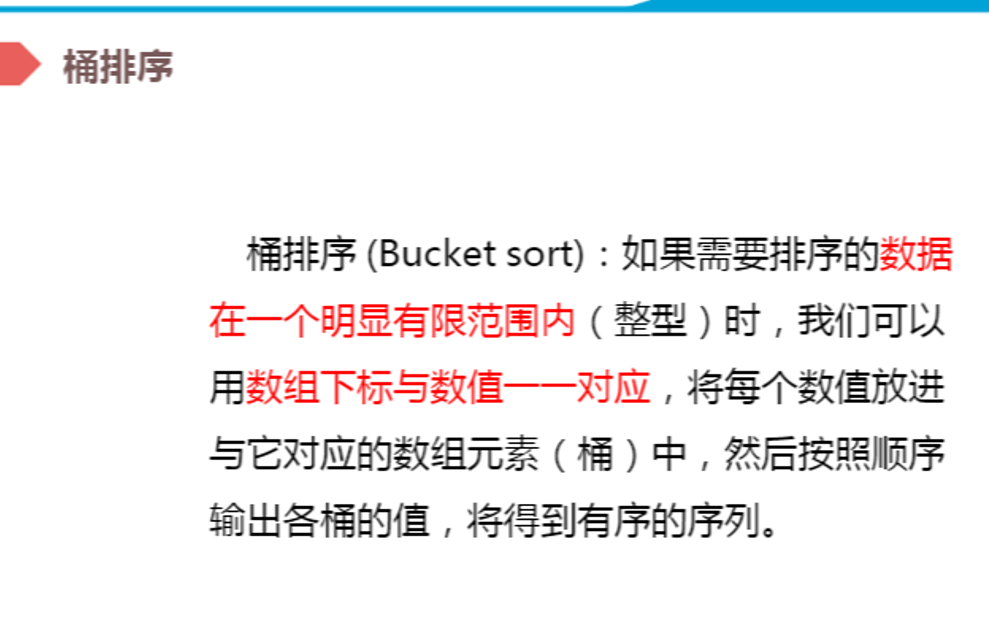
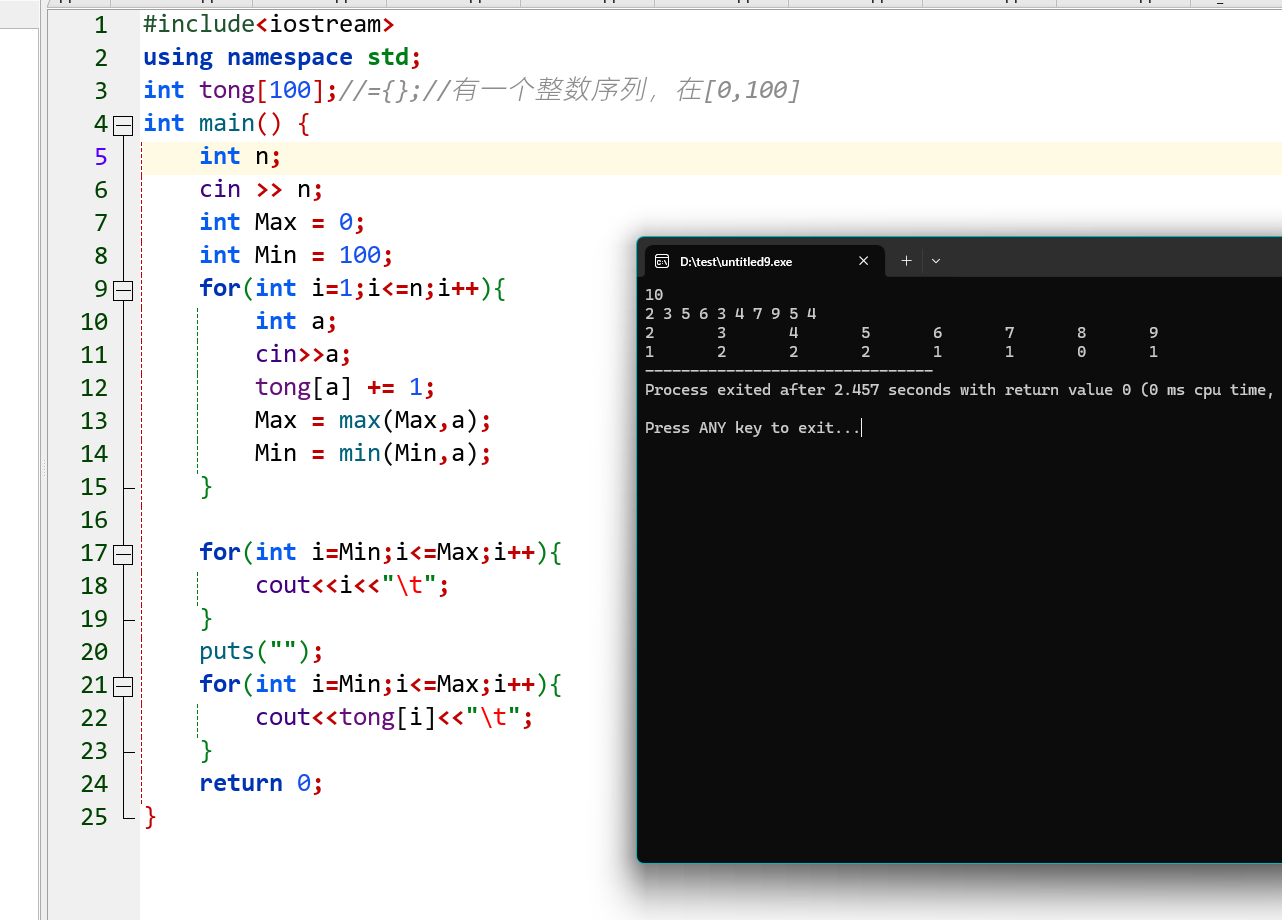

8 条评论
-
admin SU @ 2025-5-17 10:12:32
C++桶排序教程
桶排序(Bucket Sort)是一种高效的排序算法,特别适合处理均匀分布的数据。它的核心思想是将数据分到多个桶中,每个桶内部再进行排序,最后合并所有桶的结果。
1. 桶排序基本原理
桶排序的工作流程如下:
- 分桶:将数据根据映射函数分配到不同的桶中
- 桶内排序:对每个桶内的数据单独排序(可使用其他排序算法)
- 合并:按顺序将所有桶的结果合并
2. 桶排序实现代码
下面是桶排序的C++实现:
#include <iostream> #include <vector> #include <algorithm> using namespace std; // 桶排序函数 void bucketSort(vector<double>& arr) { int n = arr.size(); if (n <= 0) return; // 1. 确定最大值和最小值,用于分桶 double max_val = arr[0]; double min_val = arr[0]; for (double num : arr) { if (num > max_val) max_val = num; if (num < min_val) min_val = num; } // 2. 创建桶 int bucketCount = n; // 桶的数量,通常取数组大小 vector<vector<double>> buckets(bucketCount); // 3. 将元素分配到桶中 for (double num : arr) { // 映射函数:确定元素应该放入哪个桶 int bucketIndex = (int)((num - min_val) / (max_val - min_val) * (bucketCount - 1)); buckets[bucketIndex].push_back(num); } // 4. 对每个桶进行排序 for (auto& bucket : buckets) { sort(bucket.begin(), bucket.end()); } // 5. 合并所有桶的结果 int index = 0; for (const auto& bucket : buckets) { for (double num : bucket) { arr[index++] = num; } } } int main() { // 测试数据 vector<double> arr = {0.42, 0.32, 0.33, 0.52, 0.37, 0.47, 0.51}; cout << "排序前: "; for (double num : arr) { cout << num << " "; } cout << endl; // 执行桶排序 bucketSort(arr); cout << "排序后: "; for (double num : arr) { cout << num << " "; } cout << endl; return 0; }3. 桶排序代码解释
核心步骤分析:
-
确定数据范围:
double max_val = arr[0]; double min_val = arr[0]; for (double num : arr) { if (num > max_val) max_val = num; if (num < min_val) min_val = num; }- 这一步计算数组的最大值和最小值,用于后续分桶
-
创建桶并分配元素:
int bucketCount = n; vector<vector<double>> buckets(bucketCount); for (double num : arr) { int bucketIndex = (int)((num - min_val) / (max_val - min_val) * (bucketCount - 1)); buckets[bucketIndex].push_back(num); }- 映射函数
(num - min_val) / (max_val - min_val) * (bucketCount - 1)确保元素被均匀分配到桶中
- 映射函数
-
桶内排序与合并:
for (auto& bucket : buckets) { sort(bucket.begin(), bucket.end()); } int index = 0; for (const auto& bucket : buckets) { for (double num : bucket) { arr[index++] = num; } }- 使用STL的
sort函数对每个桶内部进行排序 - 按顺序合并所有桶的元素,完成排序
- 使用STL的
4. 桶排序的时间复杂度
桶排序的时间复杂度分析:
- 平均情况:O(n + k),其中n是元素数量,k是桶的数量
- 最坏情况:O(n²),当所有元素都分配到同一个桶时
- 空间复杂度:O(n + k),需要额外的桶空间
5. 桶排序的适用场景
桶排序适合以下场景:
- 数据均匀分布在某个范围内
- 数据范围不是特别大
- 需要稳定的排序算法
6. 处理整数数据的桶排序
如果需要对整数进行桶排序,可以这样修改映射函数:
// 处理整数的桶排序 void bucketSortInt(vector<int>& arr) { int n = arr.size(); if (n <= 0) return; // 确定最大值和最小值 int max_val = arr[0]; int min_val = arr[0]; for (int num : arr) { if (num > max_val) max_val = num; if (num < min_val) min_val = num; } // 创建桶 int bucketCount = (max_val - min_val) / n + 1; // 动态确定桶数量 vector<vector<int>> buckets(bucketCount); // 将元素分配到桶中 for (int num : arr) { int bucketIndex = (num - min_val) / n; buckets[bucketIndex].push_back(num); } // 对每个桶进行排序并合并结果 arr.clear(); for (auto& bucket : buckets) { sort(bucket.begin(), bucket.end()); arr.insert(arr.end(), bucket.begin(), bucket.end()); } }7. 桶排序的优缺点
优点:
- 时间复杂度接近线性,效率高
- 适用于浮点数等特殊数据类型
- 稳定性好(取决于桶内排序算法)
缺点:
- 需要额外的空间
- 对数据分布敏感,分布不均匀时性能下降
- 实现相对复杂,需要合理设计映射函数
8. 总结
桶排序是一种高效的排序算法,但对数据分布有一定要求。在实际应用中,需要根据数据特点选择合适的映射函数和桶数量。当数据均匀分布时,桶排序可以达到接近线性的时间复杂度,是一种非常高效的选择。
-
@ 2025-5-5 19:03:11
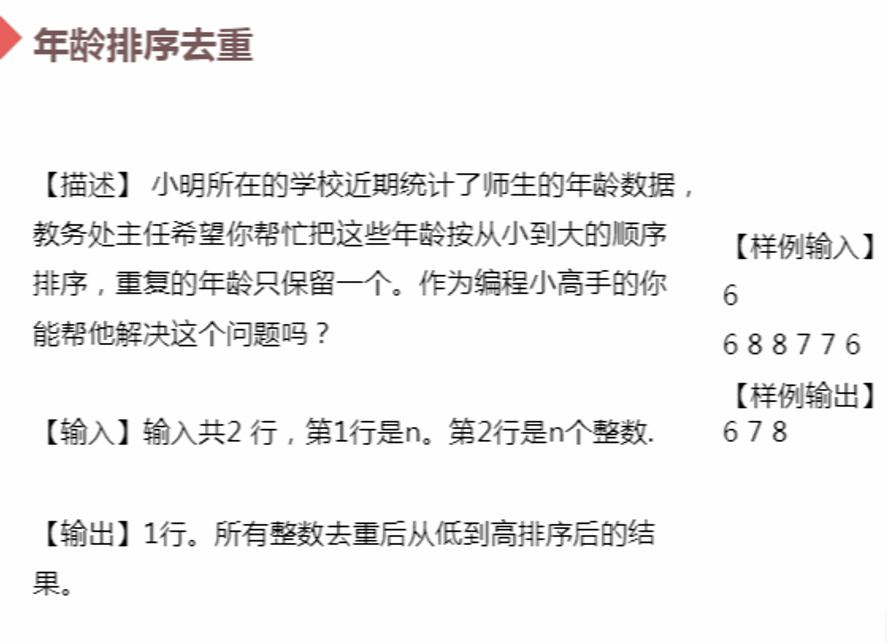
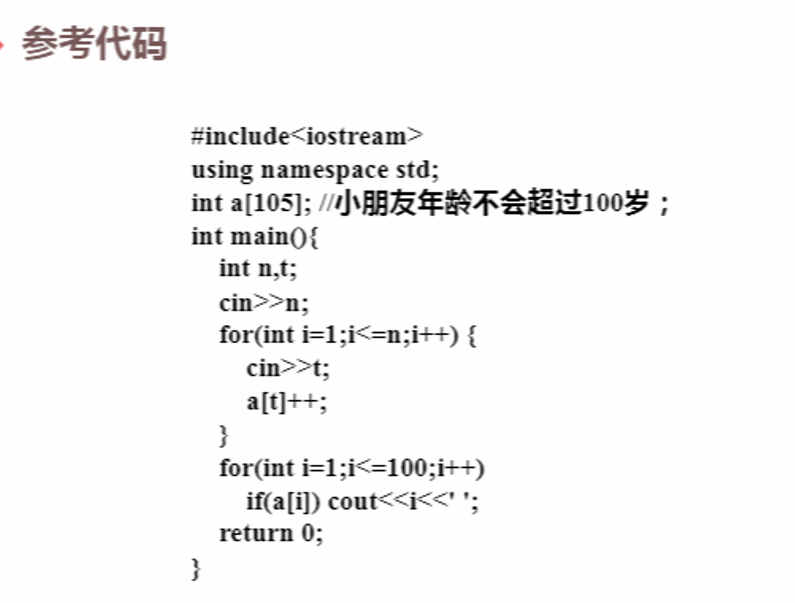
-
@ 2025-5-5 18:57:03
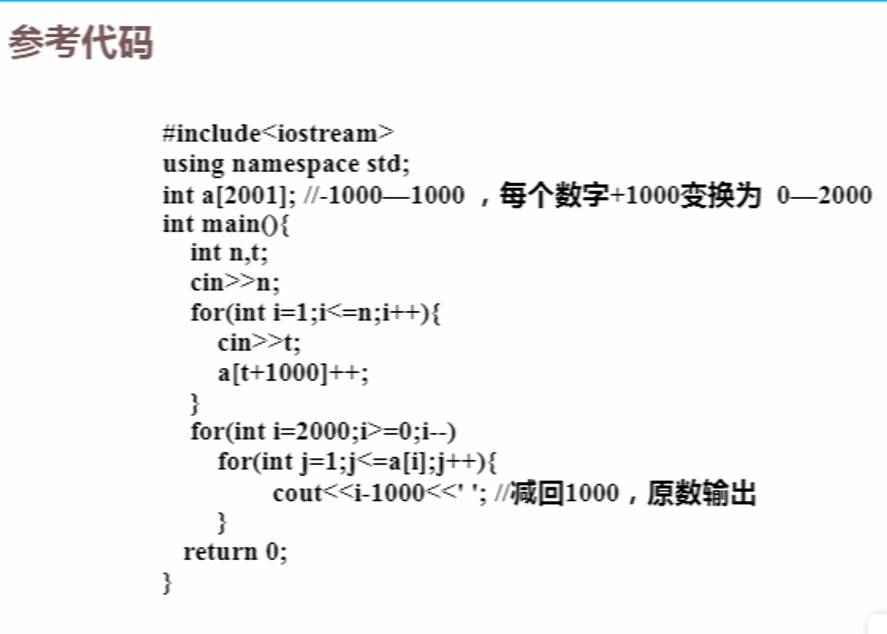
-
@ 2025-5-5 18:56:12
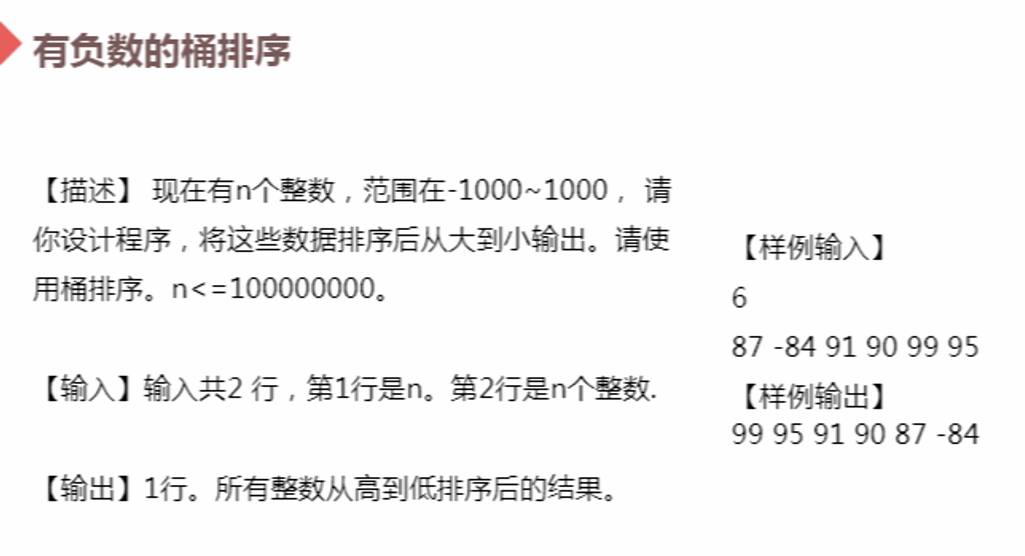
-
@ 2025-5-5 18:46:10
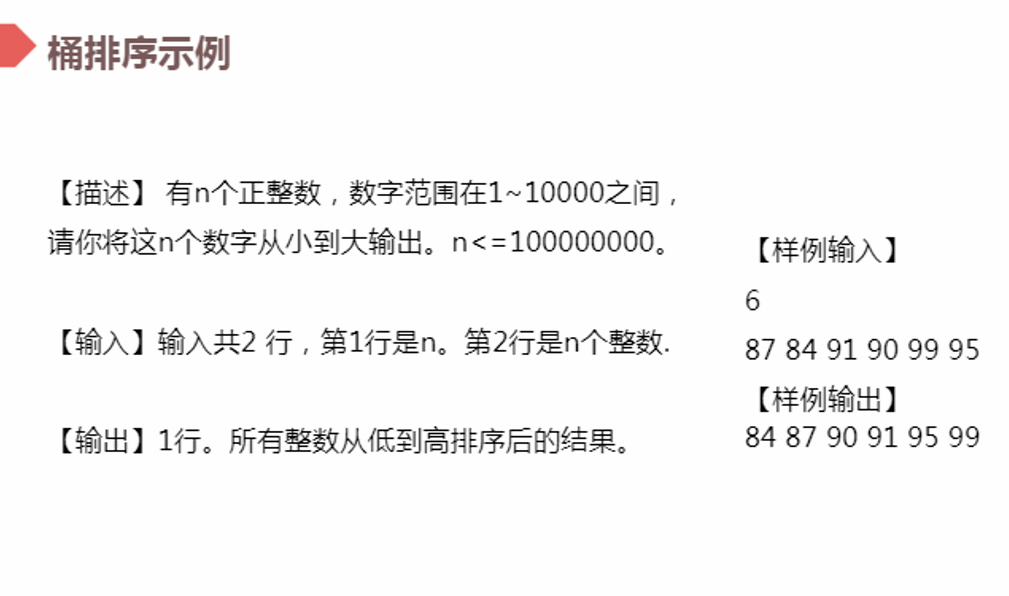
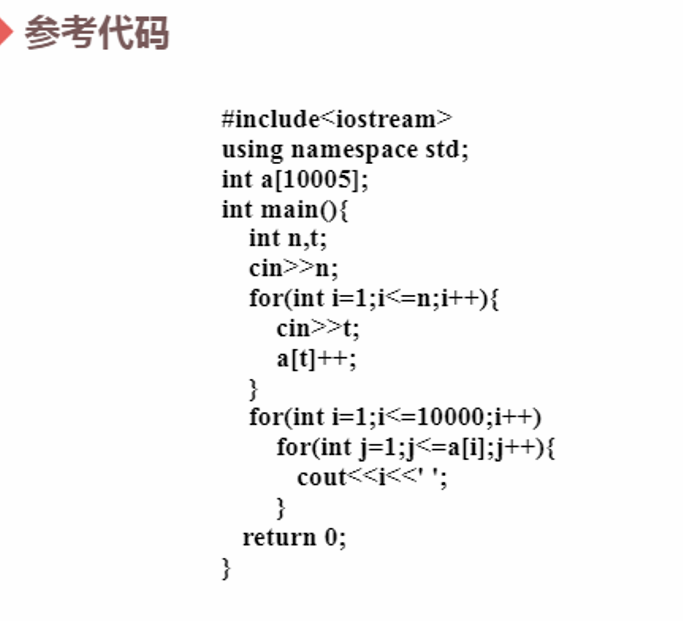
-
@ 2025-5-5 18:43:07
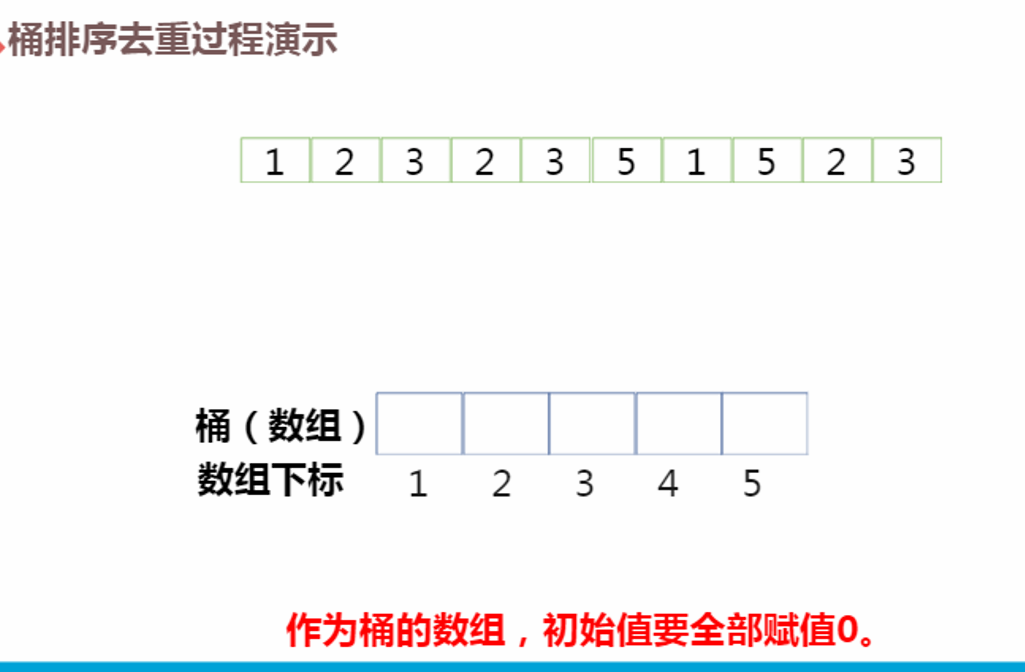
-
@ 2025-5-5 18:41:51
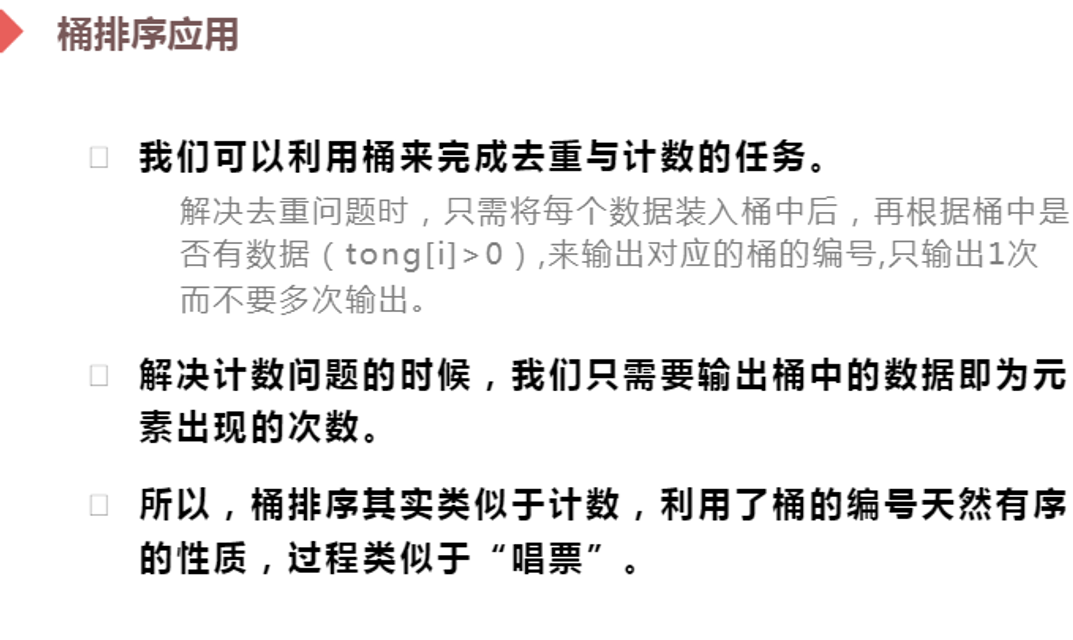
-
@ 2025-5-5 18:35:08
#include<iostream> using namespace std; int tong[100];//={};//有一个整数序列,在[0,100] int main() { int n; cin >> n; int Max = 0; int Min = 100; for(int i=1;i<=n;i++){ int a; cin>>a; tong[a] += 1; Max = max(Max,a); Min = min(Min,a); } for(int i=Min;i<=Max;i++){ cout<<i<<"\t"; } puts(""); for(int i=Min;i<=Max;i++){ cout<<tong[i]<<"\t"; } return 0; }
- 1